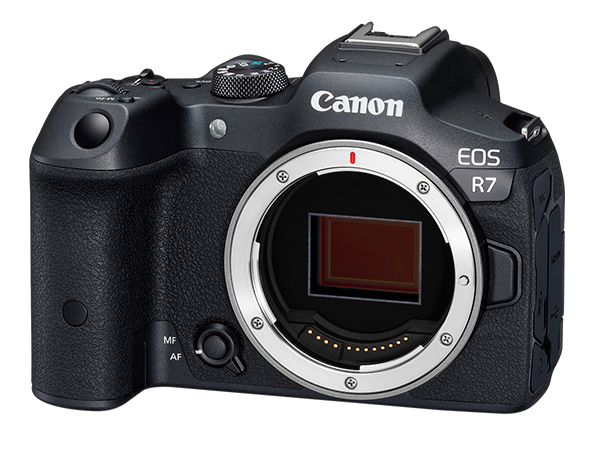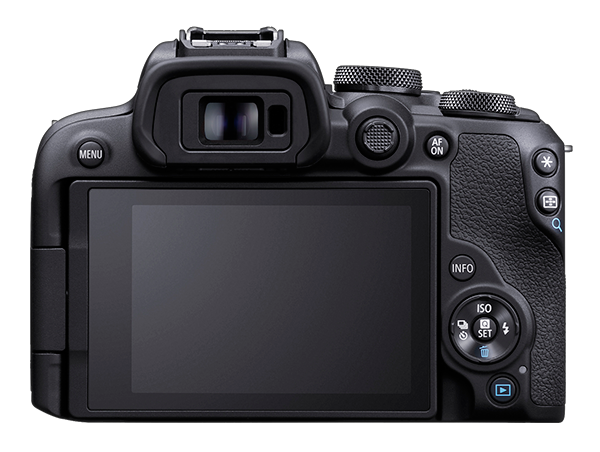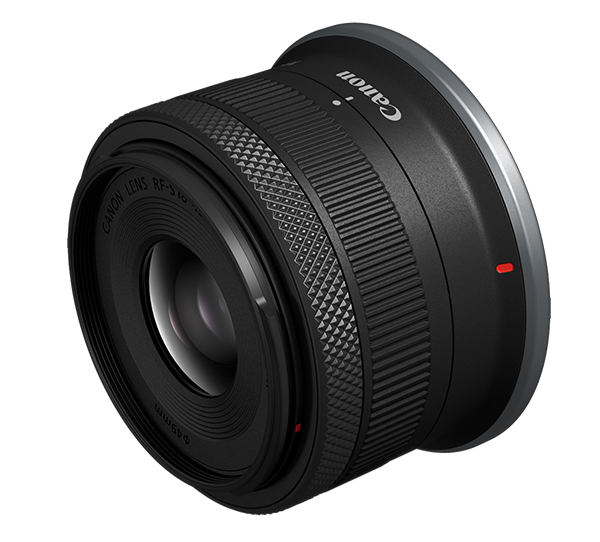Canon Launches RF-Mount APS-C Mirrorless
News
2022.05.25
The highly-anticipated launch of RF-mount Mirrorless Digital Cameras with an APS-C sensor finally happened yesterday. Having introduced a series of ground-breaking Full-Frame Mirrorless Cameras with an entirely new lens mount, people started wondering if the EF-M mount in Canon APS-C mirrorless cameras, and based on the Reflex EF mount, would be replaced to simplify future development and upgrade path.

Canon jump-started the future of their APS-C mirrorless platform with a pair of cameras and two lenses, all built around the same RF-mount as the Full-Frame lineup with two new APS-C sensors. Canon chose again to create sensors with a 1.6X crop. This is exactly the same size used in the Rebel DSLR lineup and the EF-M mirrorless-only mount. Adapted EF-S lens would therefore maintain their field-of-view. Had they chosen the fractionally larger 1.5X crop used by other camera manufacturers, vignetting would have been likely. The only downside is that third-party lenses will capture a narrower field-of-view.
The higher-end model is the Canon EOS R7. It features a 32 Megapixels Dual-Pixel CMOS sensor mounted on a state-of-the-art 5-axis image-stabilization system. Its Dual-Pixel design gives it the ability to measure phase at every pixel which is used to create a virtual 651-Point AF system covering almost the entire imaging surface. Canon still fits Anti-Alias Filters on most of their cameras, including the just-launched R7 and R10. The image-stabilization system of the R7 is only second to Canon Full-Frame mirrorless digital cameras, compensating for up to 7-stops of shake. This is the most powerful image-stabilization of any APS-C camera!

The Canon EOS R7 has a decidedly prosumer feature-set with both dual control-dials and dual SDXC UHS-II memory-card slots. Its 2.4 MP EVF reproduces the scene at 0.72X magnification with 100% coverage. Note that Canon quotes this differently as 1.15X using a different angle-of-view. There is an essential Eye-Start Sensor next to the EVF. To keep the R7 relatively compact, Canon omitted a built-in flash but included their new digital-interface hot-shoe. Using a hybrid-shutter this mirrorless can reach a maximum shutter-speed of 1/16000s and capture full-resolution images at 30 FPS. Using the mechanical-shutter, it manages an excellent 15 FPS. A deep buffer allows the R7 to grab 126 JPEG or 42 RAW files at 30 FPS. At 15 FPS it manages 224 JPEG or 51 RAW. The sensor on the R7 records 4K video at 60 FPS.
All modern conveniences are available in the Canon EOS R7. This includes builtin HDR, an Interval-Timer, even Time-Lapse Video, Auto Exposure Bracketing, Focus Bracketing, Subject Detection, WiFi and Bluetooth. Canon uses the older 4.2 LE to minimize power consumption. A USB 3.2 Type-C port allows fast transfer and in-camera charging. There are also a pair of 3.5mm stereo mini-jacks for audio input and output. The R7 accepts 3 remotes: traditional Infrared, Wired and Bluetooth.

A new design debuts on the Canon EOS R7. While definitely similar to mid-range Canon DSLRs, this new model address the main ergonomic issue of Canon DSLRs. The rear control-dial on the R7 is in a much higher position than before, where it required the photographer to shift his grip while adjusting exposure parameters. On higher-end Full-Frame models, a top-mounted third-dial is present. Instead, this model uses dual-control dials in a more reachable position. Right in the middle of the dial, there is an 8-way AF joystick. What remains to be seen is if these combined controls become accident-prone. A 3" LCD with 1.6 megapixels at the rear is mounted by the side on a rotating hinge. This has some convenience for video but makes framing at low and high angles rather cumbersome.

The second APS-C mirrorless launches is the Canon EOS R10. This is a very compact model built around a new 24 Megapixels Dual-Pixel CMOS sensor. This sensor also has an 1.6X crop and Anti-Alias filter. Its phase-detect capability form a a virtual 651-point AF-system, just line on the R7. The serious limitation of the new R10 is that it completely skips image-stabilization! This saves bulk and weight for this camera body but forces Canon to make stabilized lenses for RF-mount, something that was previously unnecessary. This is quite surprising for a system designed for the future. It might be just that the size difference is substantial enough to attract many more users. Both Nikon and Fujifilm also have both stabilized and unstabilized APS-C mirrorless cameras.
There are quite a few subtile differences between the Canon EOS R10 and the R7. While this model also sports dual control-dials, it features a single card-slot. It uses the same mechanical-shutter that can capture images at 15 FPS yet its electronic-shutter mode maxes-out at 15 FPS and 1/4000s. Buffer-depth is much more limited on the R10, capturing up to 70 JPEG images or 29 RAW files at maximum speed. Both these cameras can record Full HD video at 120 FPS and 4K but the R10 is limited to 30 FPS, while the R7 can handle 60 FPS. A smaller 2.4 MP EVF with 0.6X magnification makes framing a little harder yet leaves room for a builtin flash.

The R10 is more than an entry-level camera with a very similar feature-set to the R7. Its controls have a more traditional layout. Not only does it offer dual control-dials, it also comes with an 8-way focus joystick. There are not many extra buttons though, so expect many trips through the menu system to reach advanced features. The rear LCD here is still 3" but its resolution is 1 MP. With its compact built and lack of stabilization, the R10 weighs in just 426g! This is nearly 50% less than the 660g of the R7.
Along with these cameras, Canon introduced their first two RF-S lenses. This series will identifiy RF-mount lenses that cover only an APS-C imaging-circle. Given the limited lineup, Canon introduces both lenses with optical image-stabilization so that they may be useful on the R10.

The smallest RF-mount lens yet is the new Canon RF-S 18-45mm F/4.5-6.3 IS STM, a tiny lens that coverage a slightly wide to normal focal-range. Its really dim aperture-range makes its 4-stop stabilization mechanism truly necessary. This lens has a 7-blade iris and supports 49mm threads. At only 130g, this is one of the lightest lens ever made!

A more versatile Canon RF-S 18-150mm F/3.5-6.3 IS STM covers a much longer focal-range with a slight less dim maximum aperture at wide-angle. The optical stabilization system inside this lens only fairs slightly better at 4½-stops. A fairly small 55mm filter-thread at the front accepts screw-on filters. At 310g, this is still a light lens.
Canon is being more vague than usual about availability, listing these new cameras and lenses for Late 2022, most likely due to the current chip-shortage. The Canon EOS R7 is expected for $1500 USD, the Canon EOS R10 is being launched for $980, the Canon RF-S 18-45mm F/4.5-6.3 IS STM will fetch $300, while the Canon RF-S 18-150mm F/3.5-6.3 IS STM will cost $500 USD.
- Digital Camera
- Lens
Please Support Neocamera
All information on Neocamera is provided free of charge yet running this website is a huge endeavor. Purchases made via affiliate links found throughout the site help keep it running and up-to-date. There is no additional cost to you, so please consider buying via these links to our affilates:
If you found any information on this site valuable and did not purchase via our affiliate links, please considering donating via PayPal:
Any amount will be greatly appreaciated. Thank you for your support!
New Cameras & Lenses

Canon RF-S 14-30mm F/4-6.3 IS STM PZ
Stabilization
Canon RF Mount Zoom
2025-03-26
Canon RF 20mm F/1.4L VCM
Weatherproof
Canon RF Mount Prime Lens
2025-03-26
Canon EOS R50 V
24 Megapixels Mirrorless
Canon RF Lens Mount
2025-03-26
Venus Optics Laowa 14mm T/2.6 Zero-D VV Cine
Sony E Mount Prime Lens
2025-03-25
Venus Optics Laowa 14mm T/2.6 Zero-D VV Cine
Nikon Z Mount Prime Lens
2025-03-25
Venus Optics Laowa 14mm T/2.6 Zero-D VV Cine
Leica L Mount Prime Lens
2025-03-25
Updates
2025.01.18

Fujifilm GFX 2025 Lens Roundup
Lens Review roundup of Fujifilm GFX Medium-Format lenses. Quality, performance and handling of the GF20-35mm F/4R WR, GF30mm F/3.5 Tilt-Shift and the GF55mm F/1.7.
2024.11.18

Best 2024 Photography Gifts for Every Budget
Great gifts for photographers and photo enthusiasts selected for every budget among the best products of 2024.
2024.08.07

Eye Protection Tips for Professional Photographers
The four main considerations for professional photographers regarding eyewear.
2024.07.14

Fujifilm X100VI Review
Flagship fixed-lens compact digital camera with a 40 MP sensor and Image-Stabilization, a first for the series. Retro design featuring dual control-dials, plus direct ISO, Shutter-Speed and EC dials. Its hybrid viewfinder can switch between EVF and OVF mode.
2024.05.09

Fujifilm GFX100 II Review
Flagship 102 Megapixels Medium-Format Mirrorless Digital Camera with 8-Stop 5-Axis IBIS, 8 FPS Drive, 8K Video and 400 MP Super-Resolution capture in a weatherproof and freezeproof body with dual control-dials and dual memory-card slots.
2024.04.03

Fujifilm X-T5 Review
Newest Fujifilm flagship boasting a 40 MP APS-C sensor, 5-axis IBIS with 7-stop efficiency, 15 FPS continuous drive, 6.2K Video capture, dual control-dials and dual SDXC UHS-II slots in a sturdy weatherproof and freezeproof body.
2023.11.20

Best Digital Cameras of 2023
Find out which are the Best Digital Cameras of 2023. All the new Mirrorless Digital Cameras from entry-level to high-end professional.
2023.07.10

Fujifilm X-H2 Review
40 Megapixels APS-C Hybrid Mirrorless Digital Camera with 7-stop IBIS. Fastest shutter ever and 8K video capture. Large builtin EVF with 0.8X magnification and 5.8 MP, plus an Eye-Start Sensor. Packed with features and large number of controls in a weatherproof and freezeproof body.
2023.05.07

Sony FE 20-70mm F/4G Review
Review of the unique Sony FE 20-70mm F/4G lens. The optical zoom of this lens spans ultra-wide-angle and medium focal-length coverage, making it one of the most versatile Full-Frame lenses on the market.
2023.01.15

Huion Inspiroy Dial 2 Review
Review of the Huion Inspiroy Dial 2 tablet, a medium sized drawing surface with dual dials and customizable buttons. Connects via USB-C or Bluetooth 5.0 with Windows, Linux and Android support.
2022.12.08

How to Pack for a Photo Trip
Find out how to pack for a travel photography trip, carry your gear safely while meeting airline regulations.
2022.11.13

Best Digital Cameras of 2022
The best digital cameras of 2022. A short list of the most outstanding models in their respective categories. Choose one for yourself or as a gift.








